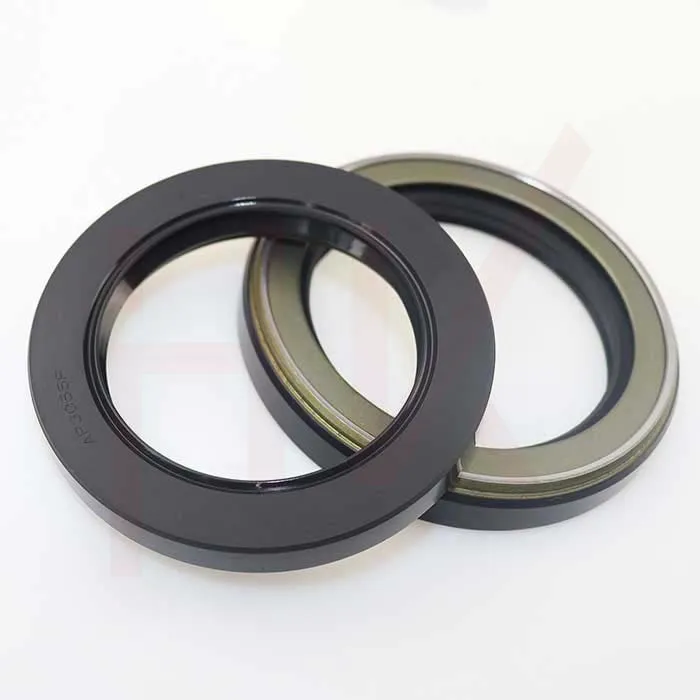دېكابىر . 04, 2024 16:48 Back to list
hydraulic cylinder seal kits by size
Understanding Hydraulic Cylinder Seal Kits by Size
Hydraulic cylinders are vital components in various industrial and mobile applications, providing the force and control necessary for machinery operations. Essential to the functionality and longevity of hydraulic cylinders are seal kits, which prevent fluid leakage and maintain pressure within the system. Choosing the right seal kit is crucial for the performance and reliability of hydraulic equipment. This guide delves into the importance of hydraulic cylinder seal kits, their components, and how to select them based on size.
The Role of Seal Kits
Seal kits for hydraulic cylinders consist of various seals and gaskets designed to prevent hydraulic fluid from leaking out of the cylinder. They also stop contaminants from entering the hydraulic system, which can lead to significant damage and reduced efficiency. The seals must withstand high pressures and a range of temperatures while ensuring a proper fit between moving parts.
A typical seal kit includes several components, such as
1. O-Rings These circular seals are often used to create a tight seal between static and dynamic components, effectively preventing leakage. 2. Rod Seals Designed to seal the hydraulic fluid inside the cylinder as the rod moves in and out, rod seals are crucial for maintaining pressure. 3. Piston Seals These seals ensure that hydraulic fluid does not escape from the cylinder body, contributing to the overall efficiency of fluid power transfer. 4. Back-up Rings Used in conjunction with O-rings, back-up rings provide support to prevent extrusion and enhance seal longevity.
Why Size Matters
Choosing a hydraulic cylinder seal kit by size is essential for ensuring the effective operation of hydraulic systems. The size of the seal kit must match the dimensions of the hydraulic cylinder to prevent leaks and ensure optimal performance. If the seal is too large or too small, it can lead to premature wear and tear, reducing the lifespan of the cylinder and potentially causing catastrophic failures.
Factors to consider when selecting seal kits based on size include
- Diameter Specifications Accurate measurement of the inner and outer diameters of the cylinders is paramount. Miscalculations can lead to improper fits. - Height and Thickness The height and thickness of the seals affect how well they compress and fit within the cylinder, making it essential to select seals that align perfectly with the cylinder's design. - Type of Hydraulic Fluid Different fluids may require seals made from specific materials. Knowing the fluid pressure, temperature, and chemical compatibility is critical before selecting the seal kit.
hydraulic cylinder seal kits by size

Sizing Tools and Techniques
To ensure accurate measurements when selecting hydraulic cylinder seal kits, several tools can be beneficial
1. Calipers Digital calipers are perfect for taking precise measurements of the cylinder's dimensions. 2. Micrometers For even more precise measurements of small dimensions, micrometers can provide critical readings. 3. Measuring Tape In cases where you need to measure larger dimensions, a measuring tape can help, especially for external dimensions.
Having the correct tools and techniques will not only ensure the right fit but will also facilitate a smoother assembly process.
Maintenance and Replacement
Regular maintenance and timely replacement of hydraulic cylinder seal kits can prevent significant downtime and costly repairs. Signs that seals may need replacing include visible wear, fluid leaks, or inconsistencies in cylinder operation. It’s advisable to consult the manufacturer's guidelines for recommended replacement intervals and maintenance schedules for optimal performance.
When replacing seals, ensure they are installed correctly, following proper procedures and utilizing the right tools. Incorrect installation can negate the benefits of using a seal kit, leading to more significant issues in the hydraulic system.
Conclusion
In conclusion, hydraulic cylinder seal kits play a critical role in maintaining the performance and efficiency of hydraulic systems. Selecting the right seal kit based on size is crucial, as any discrepancies can lead to leaks and mechanical failures. By understanding the components of seal kits, paying close attention to size specifications, and implementing regular maintenance practices, you can ensure your hydraulic systems operate smoothly and efficiently. Proper knowledge and careful selection can contribute to enhanced equipment longevity and reduce the overall operational costs associated with hydraulic systems.
-
TCN Oil Seal Metal Ring Reinforcement for Heavy Machinery
NewsJul.25,2025
-
Rotary Lip Seal Spring-Loaded Design for High-Speed Applications
NewsJul.25,2025
-
Hydraulic Cylinder Seals Polyurethane Material for High-Impact Jobs
NewsJul.25,2025
-
High Pressure Oil Seal Polyurethane Coating Wear Resistance
NewsJul.25,2025
-
Dust Proof Seal Double Lip Design for Construction Equipment
NewsJul.25,2025
-
Hub Seal Polyurethane Wear Resistance in Agricultural Vehicles
NewsJul.25,2025
-
The Trans-formative Journey of Wheel Hub Oil Seals
NewsJun.06,2025
Products categories
















